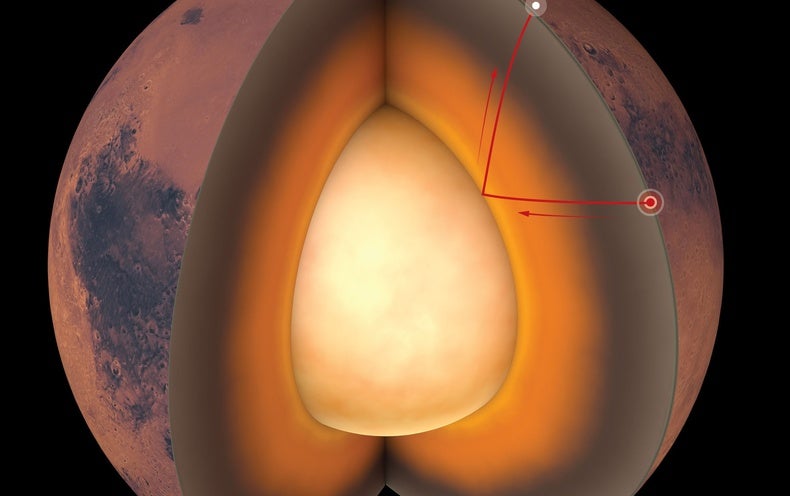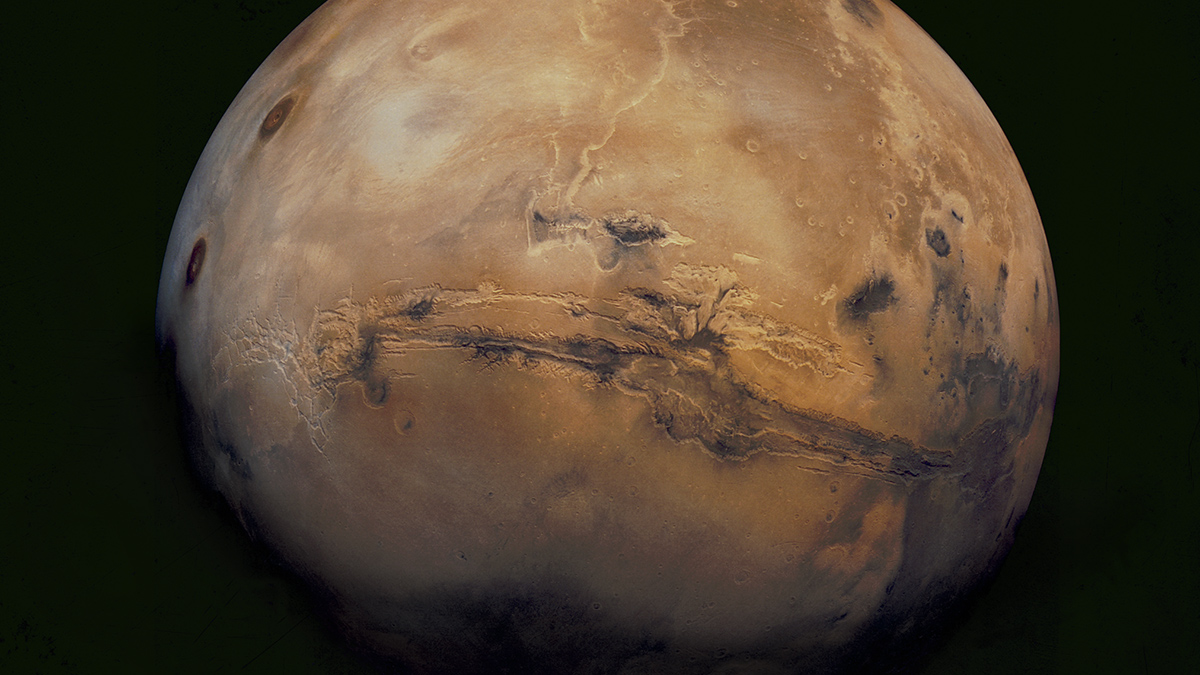
InSight Lander Makes Best-Yet Maps of Martian Depths
What lurks within the Red Planet? Although only a tenth as massive as Earth, Mars looks to have once been habitable like our own world, leading scientists to wonder whether such similarity cuts to the cores of both planets. In its innards, is Mars still a shrunken mirror of Earth, or is the interplanetary resemblance only crust-deep?
Tantalizing hints have been gleaned from gravitational data provided by past missions. But now the interior of Mars has been revealed as never before, thanks to unprecedented measurements from NASA’s InSight lander. Shortly after reaching the Martian surface in late 2018, InSight has been monitoring seismic waves rippling through the planet and using the echoing reflections of these “marsquakes” to map the subsurface. Only Earth and its moon have previously been subjected to such deep scrutiny. The results show a world both like and unlike our own and offer a thrilling second data point in a vast universe of rocky orbs. “InSight is kind of like the first telescope looking into the interior of the planet,” says Michael Meyer, lead scientist of NASA’s Mars Exploration Program at the agency’s headquarters.
InSight (Interior Exploration Using Seismic Investigations, Geodesy and Heat Transport) is not your typical Mars mission. Whereas others, such as the recently landed Perseverance, were sent to scientifically rich destinations that may have once supported life, InSight’s landing zone in Elysium Planitia was decidedly mundane, described by some as a “parking lot.” Flat and smooth—nearly featureless save for scattered rocks and impact craters—the site was the perfect place for the stationary lander to study the Martian interior. The Seismic Experiment for Interior Structure (SEIS) instrument, provided by France’s space agency and place gently on the surface by InSight’s robotic arm in December 2018, was encased in a domed shield, allowing it to detect waves moving through Mars without interference from wind or dust storms. storms. SEIS “can see motions on the order of atomic-sized vibrations,” says Andrew Lazarewicz of the Massachusetts Institute of Technology, who took part in a 1976 attempt to detect seismic waves with a seismometer on NASA’s Viking 2 lander.


















